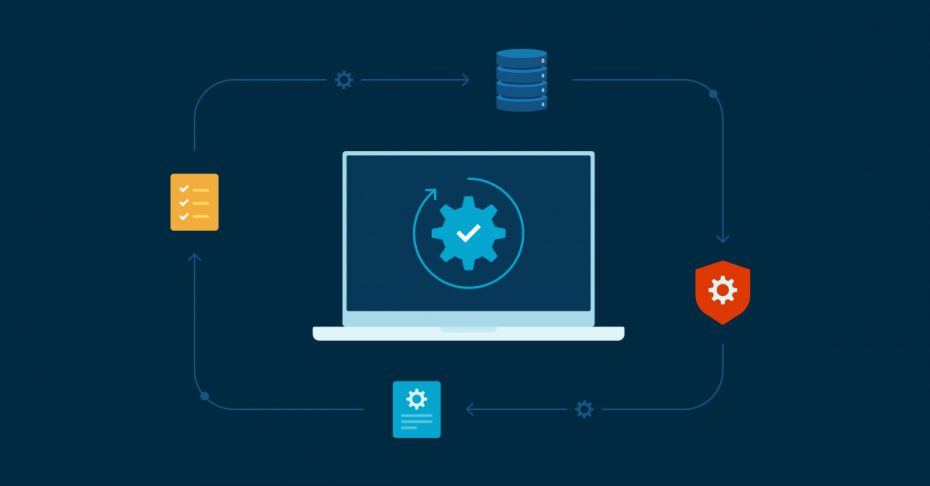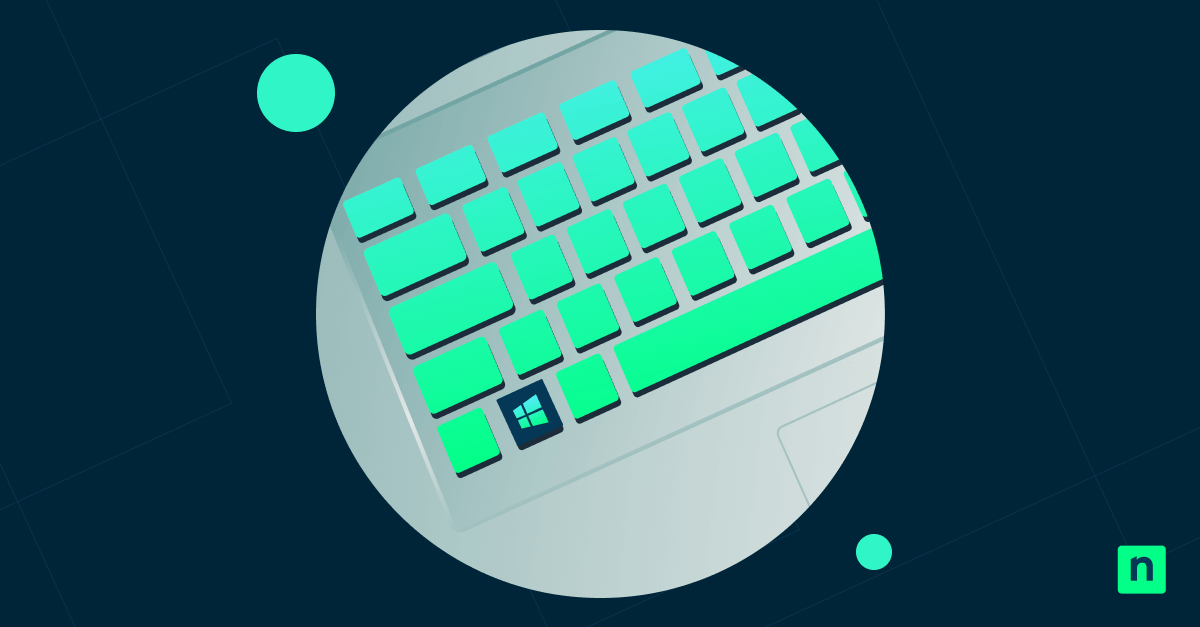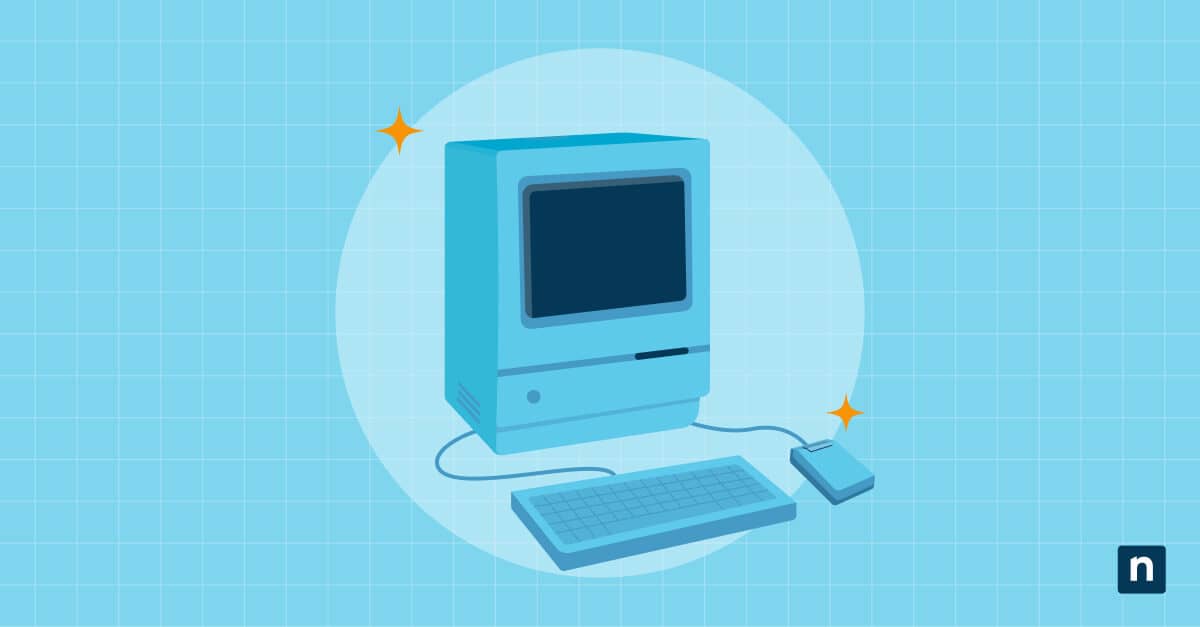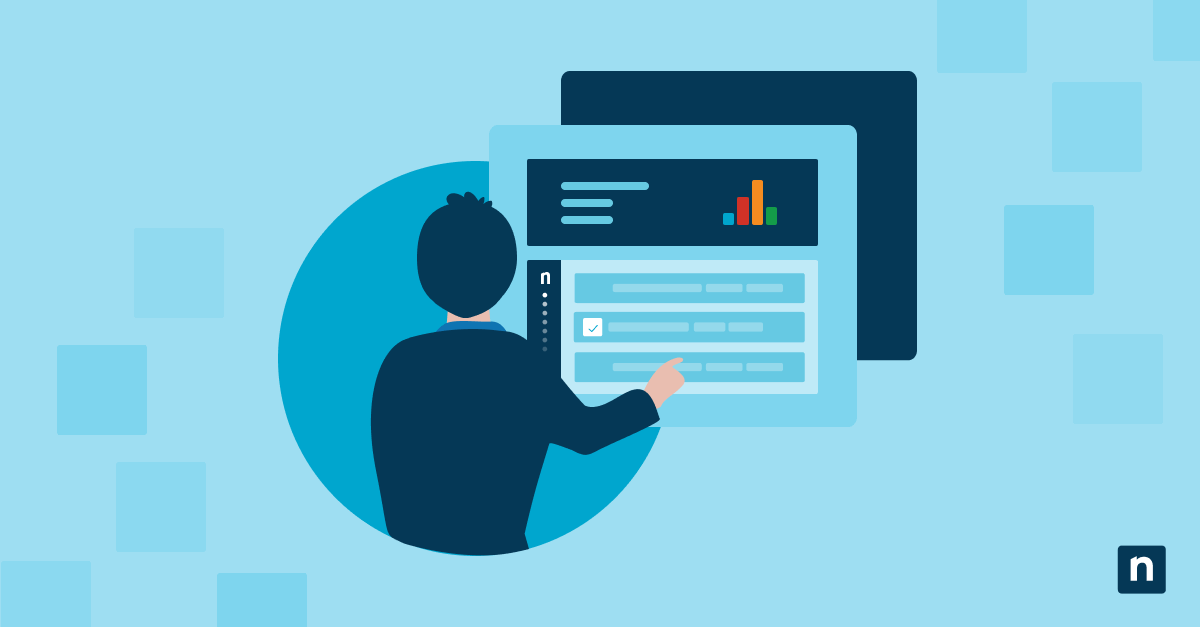Automation boosts productivity, reduces errors, and effectively lowers operational costs. As more MSPs emerge, customers become more inclined to partner with agile and proactive IT service providers.
In 2023, over 60 percent of MSPs and enterprises shared a desire to adopt AIOps (Artificial Intelligence for IT Operations), with more likely to have followed since. If you’re eager to keep pace, this guide outlines how MSP automation works and why it can be the catalyst for pushing your business forward.
→ Looking to enhance performance and availability? See how NinjaOne IT Automation can help you scale and maximize profit.
What is MSP automation?
Automation is mainly about using technology to perform routine tasks, maintenance, and security protocols with little to no human intervention.
“NinjaOne’s automated patch management saves us 40-50 hours per month,” according to Vector’s Ernie Turner, Director of IT. In the same study, Vector lobbied for an IT automation software’s ability to consolidate 10 to 15 tools in one GUI. For MSPs, this translates to better efficiency and allocation of resources, which helps drive down costs.
These savings can also be passed on to clients, which can help you tap into new markets or offer better IT packages upfront. Automation can also be leveraged for predictive analytics and for real-time and proactive IT support—leading to better response times.
Why MSP automation matters
MSPs deal with a plethora of routine tasks and processes. If most of these actions can be automated, then administrators will have more space for urgent and sensitive tasks. Further, automated workflows reduce human errors and optimize troubleshooting paths.
Altogether, process automation brings better IT performance and service delivery, which puts emerging MSPs in a better position to compete and scale.
Key areas for MSP automation
As you begin or reassess your automation journey, here are some automation opportunities to consider:
Device monitoring and alerts
Endpoint device management and monitoring are business processes that greatly benefit from automation. However, it’s crucial to understand that device monitoring is far from a one-time event.
It’s a continuous cycle that needs to be observed and optimized as operations scale and new information becomes available. Check out this guide on endpoint monitoring to learn about more opportunities for automation.
Patch management
Patch management focuses on finding and diagnosing vulnerabilities within your IT portfolio. The big advantage of automating this process is unlocking the ability to constantly monitor issues and deploy real-time solutions.
Round-the-clock patch management allows systems and applications to enjoy better uptime and stay secure against evolving cyberattacks. However, automation alone isn’t enough for a fool-proof patch management and deployment strategy.
You must also set strong KPIs and establish clear protocols for dealing with common patch management mistakes.
Backup and disaster recovery
Data and software backups are essential for any IT-reliant business. For MSPs, this presents an opportunity to offer simplified and automated backup solutions.
Cloud-based backup systems that can be easily monitored, scheduled, and managed are some of the most in-demand backup and recovery solutions in IT-enabled industries.
Client onboarding and offboarding
Many parts of onboarding and offboarding users can be automated. MSPs are often entrusted to manage control access, which can be built upon to create systems and cycles for introducing new software and processes, or for swiftly revoking access as needed.
Routine maintenance (disk cleanup, reboots, updates)
Routine maintenance tasks are crucial services often outsourced to MSPs.
However, many of these repetitive tasks need constant attention and implementation, or simply put, resource-intensive. As a result, these processes are mainly the first ones to be automated.
In automating routine maintenance, MSP are able to provide operational integrity and prompt service delivery. In addition, both you and your clients are able to enjoy cost-savings without any operational setbacks.
Remote monitoring and maintenance are key services that enable enterprises to scale and meet compliance.
Security tasks (antivirus updates, firewall rules)
Proactive IT solutions hinge on your ability to provide real-time security solutions.
And the most effective way to deliver this level of service is through operation and process automation. IT stacks are always complex in nature, which is why manual security protocols are not enough to identify and address gaps in security.
If you’re looking to build trust, especially with new clients, it’s important to have a dynamic approach to managing and integrating enterprise security.
Backup and recovery, patch management, and access control are some key automations that enterprises typically seek from MSPs.
Documentation automation
Reporting and documentation can take hours of manual labor, especially in an IT-enabled environment. It’s also no fun for most employees.
The solution? Task automation via software like NinjaOne Documentation™ in order to accelerate data collection, troubleshooting, and other business processes. In addition, MSPs can offer additional optimizations for better collaboration and knowledge-sharing.
Choosing the right MSP automation tools
Infrascale revealed that SMB and mid-market business executives primarily look to MSPs for cost-saving benefits, with increased security being the other top priority.
When it comes to services, respondents named data protection, data and analytics, and cloud services as the top solutions they use from their MSP partners. Backup and recovery, and cybersecurity round out the top five.
These capabilities are hallmarks of the NinjaOne IT Automation software, which has powerful tools that can be integrated to run automations behind the scenes or on demand. More importantly, it’s a centralized solution that can scale with your business or the clients’ needs.
Here are other essential qualities to look out for when choosing an IT automation software:
Ease of use
Is the software user-friendly? It’s essential to find an IT automation platform that’s already streamlined for MSP workflows and client integration. Also, consider how easy or difficult it is to use the software for migrating data and client endpoints.
An outdated user interface can introduce unnecessary challenges for your workflow and technicians. Evaluate the software with input from your front-line staff.
Customization and scalability
Does the current cost and feature allow you to expand your portfolio? Will the additional costs make it hard for you to scale? Apart from the upfront savings you get from automation, look for an IT software or RMM that can scale with you as your business and client portfolio grow. In addition, look for customization options that allow you to integrate or strengthen your core services.
Reporting and analytics
Don’t overlook the platform’s capabilities to provide reliable reporting and data analysis. These will help you establish relevant KPIs to monitor automation success and optimise SLAs.
Integration with RMM and PSA
Integration used to be a bigger challenge in the IT automation space. However, there are more platforms today that provide better process and software integration. Check out this guide on common integration issues and how to address them.
Support and training
Adopting a new IT environment or software is no easy feat even for experienced IT stacks. On that note, look for vendors that have a comprehensive training plan and reliable support.
These qualities will help speed up implementation and integration, not only during the initial transition, but also when new updates, builds, or features become available.
MSP automation ideas to get started
The first step MSPs take towards automation is finding inefficient or tedious processes to automate. While this might sound simple, unearthing these workflows and processes can be more challenging than you might expect.
Quick-win automation projects
With that said, you may look into these quick-win projects to get started.
- Automate server health checks
- Auto-remediation scripts for common alerts
- Scheduled reports to clients
- Self-healing scripts for disk space, services, etc.
Instead of making significant changes or massive investment upfront, MSPs can use IT automation to scale proportionately. Straightforward implementations like server health checks are excellent for quick deployment.
These initial integrations can help you map out the IT environment and identify other areas of opportunities as well as friction points. That said, here’s an overview of common IT tasks that to automate.
Long-term strategy tips
After automating internal processes, it’s time to switch directions and focus on automating the services that are provided for clients. In the long run, automating these services will save countless hours and resources for your MSP.
With that in mind, here are some strategies for long-term application:
- Build a library of reusable automation scripts
- Regularly review and update automation policies
- Use automation to enhance client reporting
Once you have a better grasp of the IT environment, you can put more focus on API management and IT script automation. These scripts will allow you to have greater control over the automation process at a more granular level.
How to build an effective MSP automation strategy
MSPs cater to a wide range of industries and a variety of IT environments. As a result, you must look for an agile IT automation tool and flexible strategy to meet client demands and position yourself to scale.
Here’s an outline for building a comprehensive automation strategy.
- Define goals: What do you want automation to accomplish?
- Prioritize tasks: High-volume and high-risk first.
- Start simple: Implement basic automations first.
- Measure results: Track time saved, fewer incidents, improved SLAs
- Continuously improve: Tweak and expand automation over time
Even after installing an RMM tool, the automation journey isn’t over just yet. Although RMM does take care of many tasks, it can’t automate all of them by itself. That’s where integrations come in to save the day.
A common RMM integration is PSA or professional services automation. NinjaOne’s RMM integrates with all the top PSA tools so that MSPs can also automate the tasks associated with running a business, such as CRM, billing, project management, et cetera.
Set up automation for your MSP today
Automation opens many new doors for MSPs, including opportunities to outperform competitors, save time, lessen heavy workloads, and even increase profits. Creating automated workflows may seem intimidating at first. But your initiative and all this new information on where to begin will help make the transition smoother.
On that note, NinjaOne RMM® offers comprehensive IT solutions for operation and process automation, including patch management, endpoint management, backup and recovery, and monitoring. In addition, users can automate IT documentation and help desk activities, such as ticketing and asset management.
All things considered, finding the right IT management platform can be your biggest challenge as you scale. But once you’ve nailed down your automation strategy, it’ll be easier to find the perfect software for your needs.








